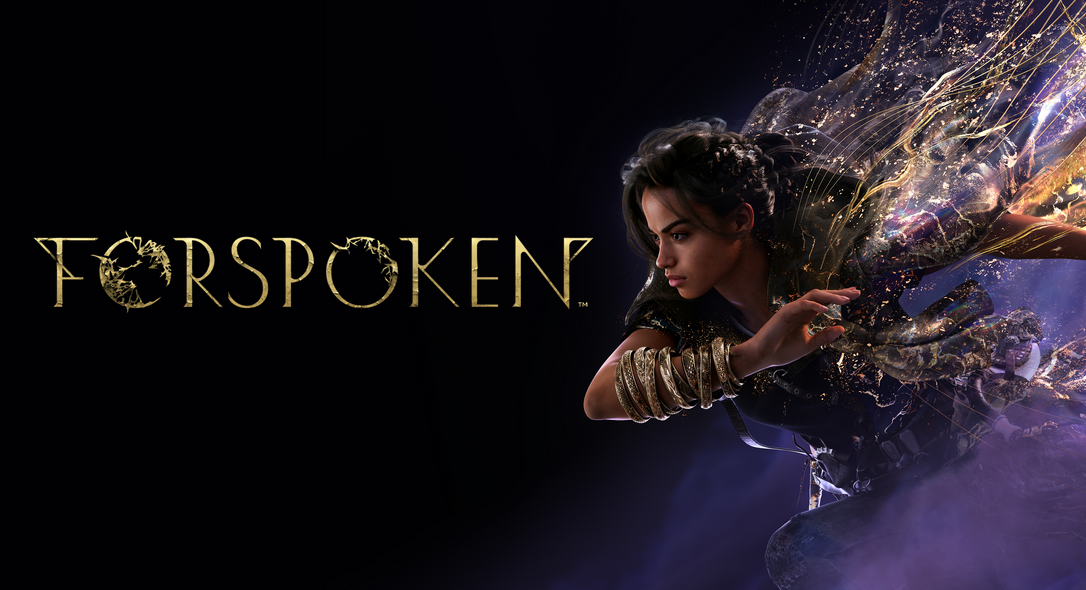Forspoken is a game of two halves. Quite literally. One half is the portion you’ve been hearing about online – a kind of embarrassing, cliché-ridden, and poorly delivered narrative that gets in its own way. But that’s really only true for the first four hours. Then comes the second half – full of liberating magical traversal, action-packed spell combat, and a narrative that has all the nuance, twists, turns, and payoffs that the beginning so lacked. And I say halves because you can complete the whole thing in barely 10 hours if you really go for it.
Forspoken doesn’t feel like the open-world western RPG it’s been billed as. It’s an Isekai story dressed up in western clothes. Isekai is a genre, primarily of anime (although it can be any fiction) that involves an outsider visiting or getting lost in another world, usually through some kind of portal. Their modern skills and attitude get the job done. Think Sword Art Online, Escaflowne, or Inuyasha (yes, I’m showing my age). In the west the genre is a little harder to come by, especially in modern fantasy writing – you have to go back to the classics like Alice in Wonderland, Narnia, or the John Carter books to really see a popular western equivalent.
Forspoken kind of straddles the two, created by a Japanese developer, but written in large part by western writers. It looks like it should be a big-budget western release, but it’s more closely aligned with other Square Enix output that has a more niche audience. This was always a middle-of-the-road-type title, that was masquerading as something for everyone. The marketing was ambitious, but it’s done itself a disservice, creating exceptionally high expectations, and then massive disappointment. But there needs to be a more balanced view.
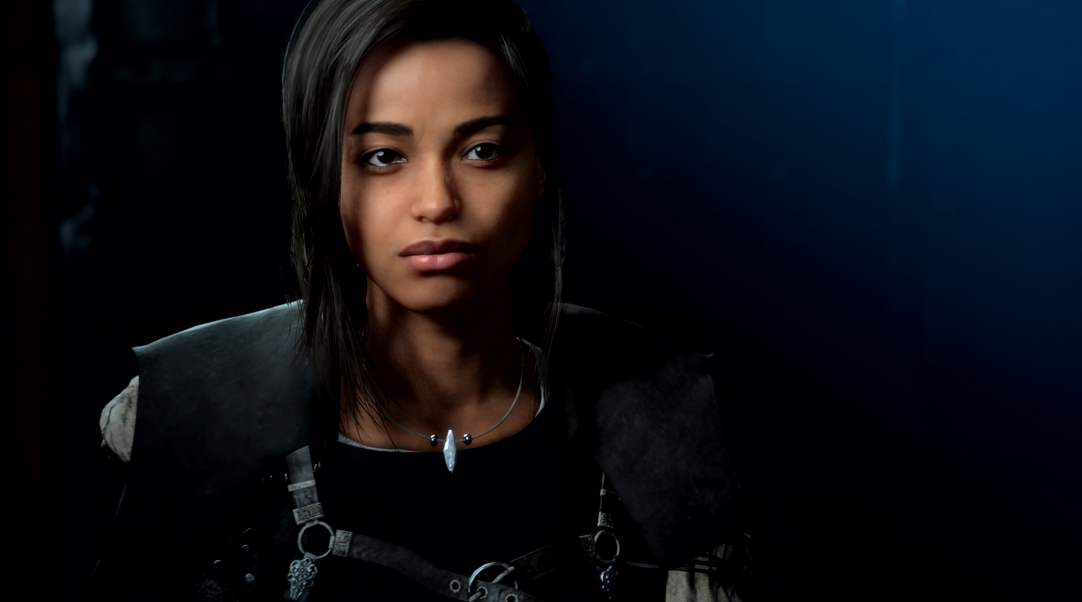
You play as Frey Holland, a believable and likable black female lead from New York. The opening could be a Spider-Man movie or any superhero’s origin flick. Abandoned as a baby, Frey has grown up on the streets, one step ahead of the law, and not enough steps ahead of trouble. She’s a girl wishing for escape from a difficult down-and-out life. On the verge of jumping off a bridge in despair, Frey sees a glint and investigates.
What she finds is an intricate fantasy bracelet, and a portal that whisks her into another world – the fantasy realm of Athia. The bracelet, which she names Cuff, can talk and imbues her with magical powers. When she then meets the people of Athia, and the grotesque monsters that keep them corralled in one city, she discovers that Athia is on the verge of utter collapse. A miasma, which Frey dubs the ‘Break’, is destroying the land and turning the people into zombies. And of course, as this is an Isekai saviour story, Frey is mysteriously immune to the Break and the only one capable of fighting back. So far so cliched, but it’s also relatively wholesome and fun, and full of heart.
On paper the setup sounds fine, even interesting. But in practice, the way it’s delivered is bad. Frey and Cuff barely sound like they are in the same room let alone talking to each other. Frey delivers some truly awful lines during the first few hours, when she’s just too damn excited about her new powers. But if you thought she was bad, Cuff is far more irritating. His bad British accent and disinterested tone never seems to be involved in the same conversation. They talk over each other in ways that make the conversations seem unreal.
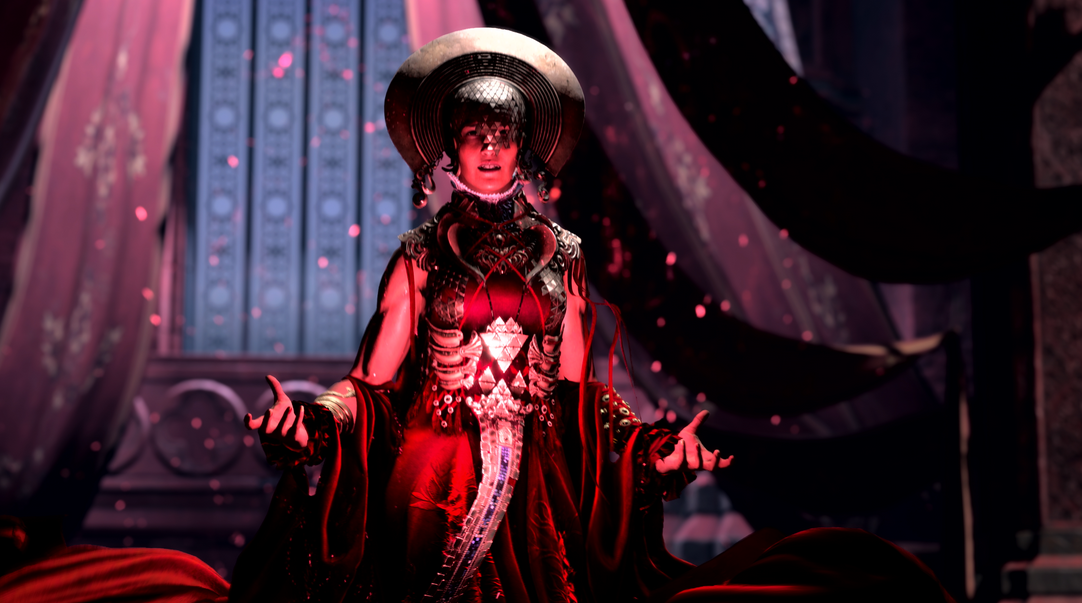
The NPCs are the next crime. Stilted dialogue, massive pauses all the way through conversations and bizarre jarring voices abound. No one has anything much of interest to say, and this is the bunch of people you are meant to care about and want to save. The most egregious is Auden, the local healer slash busybody, whose conversations are stilted at best and are delivered just as poorly. She frees you from jail early on when the other NPCs decide you could be a demon.
This leads us to another crime – the handholding gameplay in the first few hours. Auden drags you into a series of painfully bad, scripted stealth scenes, avoiding guards as you escape. These are pretty close to the worst stealth sections I’ve ever played. You are told to crouch behind Auden, watch the guards, and then follow her. The guards never see you and follow set paths. She says to stay in the shadows. There are no shadows for large areas and you won’t get seen even if you ventured out. By the end of it, I realised there was no gameplay here at all, it was just the game allowing me to interact between cutscenes.
It happens outside the stealth too. You are never allowed off the leash. You are plonked into ‘walk’ mode after a number of cutscenes, only to walk four steps into the next one. NPC quests or ‘Detours’ are just follow them to a place and find an item, or listen to their banal conversation and move on. Whenever the game feels you need to listen to Cuff, it will simply lock you in place, and you just have to listen to the often badly delivered exchange while staring at the scenery. There’s no engagement, there’s no gravitas.

At this point, I just wanted to give up on the whole thing. I understood the low review scores. If you don’t care about the thrust of the quest, why carry on? Enter the Tantas. The actually interesting part of the story reveals itself close to hour four. The Tantas are four sorceresses who used to be benevolent rulers who led Athia in times of plenty, but in the last 20 years have turned on their people, becoming vengeful and evil. Their magic is causing the Break. When one turns up in town and things go very badly, Frey suddenly finds herself outside the city and on a mission of vengeance.
During the beginning, all you want is to be free of the constraints and just magic parkour across that world. Suddenly you can. Suddenly you’re unshackled. When Forspoken finally gets out of its own way, it shines. The world of Athia is huge, a beautiful multi-levelled expanse to explore, and while things to do are generally combat focused, the joy of just getting out there and running your little superhero legs off is palpable. Gone are the annoying NPCs, the bad directing, the heavy awkward pauses, the scripted sections. You are just free. And that is Forspoken’s biggest strength. That magic parkour is really cool and the amount of contextual flips, jumps and just bonkers contortions that have been animated for Frey is ridiculous. She moves incredibly well.
You will find a lot of places to stop, but they are helpfully spread apart. The internet consensus early on was that the world looked sparse, and it is – it’s been ravaged by magical blight – although they meant there was nothing to do. Had the locations and things to do been any closer together, I wouldn’t have felt the freedom. I would have been back under the narrative thumb, being funnelled through combat scenarios. The world is big and expansive like that in order to give you space to run.
It is a shame however that almost every place to stop is a minor or unnecessary craft item, or a combat scenario. Lots of these you can just run on from, but many also lock you into a ‘challenge’ scenario or room. Even when it went a bit Assassin’s Creed on me and we delved into an underground tomb to explore, it was barely more than a grid of corridors and arenas to fight yet more hordes in.
Places and areas in Athia don’t feel lived in, or like there’s any history. The story fails to do any real world-building beyond the Tantas and Frey’s narratives, so nowhere feels like a place to visit. Nowhere is called the Bogs of Gloom, or the Mines of Moria. Nowhere is imbued with that ancient or legend energy. You aren’t really tasked with crossing any hardship areas, just reaching Tanta fortresses.
The scenes where you approach, talk to and fight the Tantas are way above the quality of the rest of the game. Along with the freedom you’ve suddenly been given, Forspoken’s story takes a massive lurch into good, and even great territory. Frey’s character mellows, the conversations get less annoying, and the narrative actually starts to hit pretty hard. Frey’s arc is kinda obvious (going from selfish to helpful etc) but it’s dealt with well, and by the end the twists actually had impact. I cared again. What a rollercoaster.
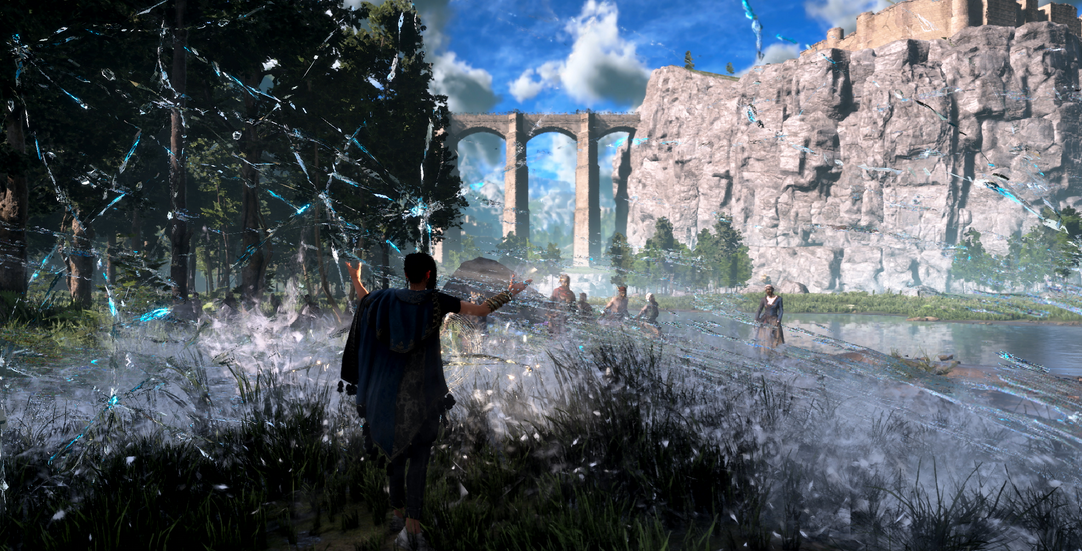
Apart from zipping along doing magic parkour, spell combat is the thing you’ll be doing the most because almost every quest and challenge is combat-related.
Frey begins with purple projectile magic, attack variants on the R2 trigger and support variants on the L2 trigger. I don’t think any part of this is explained adequately, but you will get the hang of it with a little time. Enemies often come in huge hordes, which the PS5 does a grand job with, and attacks will come from all sides on normal difficulty. You need to maintain your circle button parkouring while you lay into them with the magic. Frey will evade almost anything with a good parkour burst, and you can get skilled enough to barely ever get hit.
The combat itself is fun, but there are aspects of it that aren’t. The enemies are too bullet-spongy and large enemies can be resistant to your bolts, making battles last a long time. As you are constantly firing off spells with R2, your trigger finger can get real tired. Working my way through some of the challenge gauntlets and through the last areas of the game, combat room after combat room, I felt like I’d done five years’ worth of RSI damage to my finger.
As you progress you get other types of magic, loosely referred to as red (melee), green and blue (both projectile variants) types. These add a little spice and some enemies are susceptible to different types. However, I barely used them outside of this, because I’d spent so much of my magic power and points on the purple spell tree.
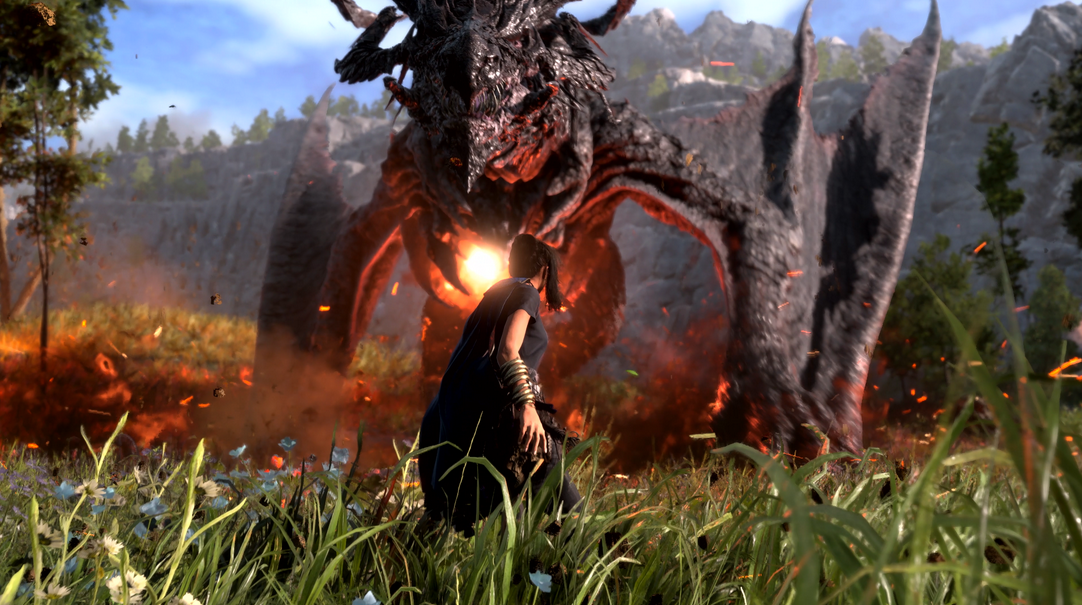
The game also lets you upgrade spells by doing certain activities, like killing thirty enemies with a particular spell. However, it drove me mad not recognising when I’d done the appropriate actions multiple times. One is kill three flying enemies, and I killed hundreds by the end of the game without it ever popping. Because they take a long time to come, I didn’t want to waste any energy of the other skill trees and magic types.
The camera can also be dead against you. If you lock on, it tracks the enemy and keeps them in sight. So far so good. Except on the aforementioned flying types, it dunks itself in the ground so you can see upwards. In wide open expanses this was still just about useable, but in the city, or in built-up areas it just makes traversal, combat and even seeing where on earth you are almost impossible.
Take the blasted lock-on off then, you say. Well, yeah, but then you can’t hit the enemies. The most egregious boss in the game demonstrated this to the worst degree. Quite late in the story, there’s a flying dragon-type boss in a very built-up city. You need to really fight it on the rooftops. However it flies so fast that your projectiles don’t hit it, you have to wait for it to stop and blast you. To avoid the blast after you’ve done a sliver of damage to it, you need to parkour evade away and boom, you’ve fallen off a roof, and the camera goes completely insane trying to remain locked on a fast-flying dragon while you are at the bottom of an alleyway.
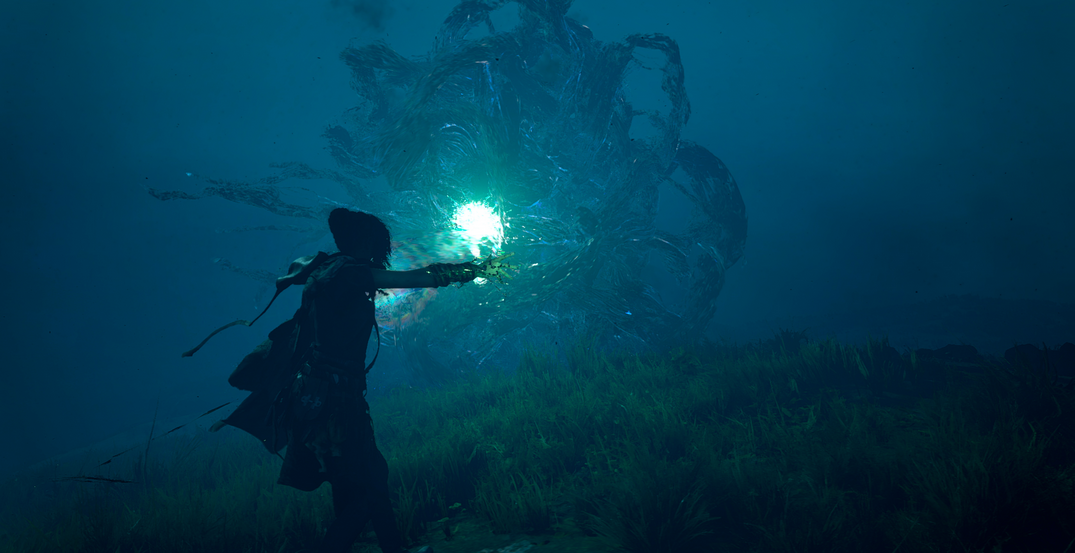
The graphics are also a tale of two halves. For the most part Frey is incredibly well-animated and looks splendid throughout – Magic and spiky particles fly off her and her clothing and hair are all great. NPCs on the other hand, even important ones, look at least a generation old, perhaps more. The first speaking NPC Auden really exemplifies the bad graphics. Her animations are stilted and hard, she speaks with huge breaks in the conversation, like a robot struggling to compute the next line, trying to convince you they’re human.
The graphics in the city feel washed out, even in quality mode like there’s no depth, no shadows, and no contrast. Conversely out in the wilds, some areas of Athia are lush and vibrant, alive with grasses and other flora. It’s like this across the rest of the game, like a lot of effort went into Frey and the Tantas, their graphics and story, and the rest of the story and characters were left to languish graphically and narratively.
The music is another quiet strength. The soundtrack pieces are memorable and are not that repetitive feeling, they have little melodies that liven it up above an average classical score. They give Athia a vibe, or a feeling, and it’s a positive one.
I couldn’t find a place to put this until here, but we need to talk about that menu. Forspoken’s menu is a kind of Fish-Eye lens effect over the text you need to view, pulling the edges off into an unreadable squish. Every page of the menu is overly complex, littered with embellishments or backgrounds that make it hard to read. You need to bring everything into the centre to really read it properly. I took to using it as little as possible, just to avoid the headache, but that means missing out on lore and history in the game’s written archives.
Lastly, the map is here too. The map of Athia is so large as to be essentially unusable. You can zoom out, but not in a manner that really helps. When a quest marker is given to reach the next Tanta for example, the endpoint is so far off the screen, that the next time you look it can be impossible to find. I had to make use of the waypoints device otherwise I lost track of where it was completely.
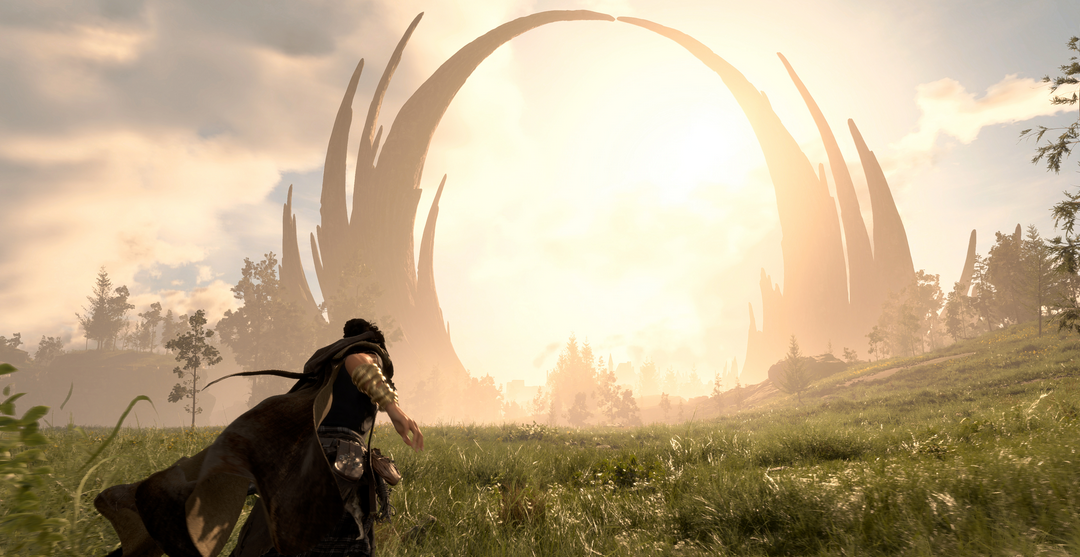
I want to try to end on a positive. My appreciation of the game was tied to what sections of it I was playing. Where I’d gone in for the story, the beginning of the narrative wore on me to the point I wanted to just quit. After that four-hour mark, things opened up so much and the story took such a leap upwards in quality that I had to completely reassess. Frey shines in the midst of all of it when she’s not being betrayed by another character’s terrible acting or stilted dialogue. She’s incredibly believable. I also hadn’t expected the combat and traversal to actually become my favourite parts.
It’s just such a strangely structured game – there’s this open world to explore, but by the time you get to it you are done with the terrible quality level. When the good stuff arrives, it can be completed in barely six or so hours, which makes barely any sense for an open-world title – why bother creating such a big world? You could probably speedrun the whole thing in about ten hours, and the last six hours will just feel like a boss rush mode with a few narrative breaks. When you spend four hours on a setup, before allowing the player to explore, you set up the expectation of a massive thirty-plus-hour campaign, and Forspoken is anything but. It’s a linear narrative, shoved into an open-world structure.
Difficulty is also way off. Barely any single attack ever outright killed me, it always left me with a shred of health and a moment to down a health draught. The story beats and bosses give you enough experience to level up a sufficient amount that none of the enemies should pose a significant threat. Even without much exploring, I had enough EXP to take out every Tanta first try, without that much trouble. I think I no-damaged one of them on normal difficulty. Again it just begs the question, why the open world then?
The reception on the internet to Frey and some of her worst lines is really not representative of the whole game. The worst moments are at the very start, and once it gets out of its own way, Forspoken is a good, even great experience. Frey comes into her own and I genuinely cared about her plight by the time the credits rolled.
If the world of Athia, or the spellcraft combat you’ve seen appeals to you, I’d say give Forspoken a try. These things it does very well. Don’t go in expecting a high-gloss western action RPG – that’s not what this is. This is a linear experience for the most part, masquerading in an open-world RPG’s clothes. The story takes 3-4 hours to really let go of you – think of it as a tutorial – but the next 6-8 hours is a blast, where the story beats get better and better, and crucially the quality continues to rise right to the end.
Forspoken is a fun action RPG when it gets out of its own way. Its linear narrative and heavy-handed first few hours sap the player’s goodwill, before letting you free and realising its true potential. Strong combat and traversal mechanics really shine, and by the end, even the story manages to rise, like Frey herself, to the challenge.

Forspoken is available now on PlayStation 5 (review platform) and PC.
Developer: Luminous Productions
Publisher: Square Enix
Disclaimer: In order to complete other reviews, we were provided with a promotional copy of the game. For our full review policy, please go here. This game was bought by the reviewer.
If you enjoyed this article or any more of our content, please consider our Patreon.
Make sure to follow Finger Guns on our social channels. Twitter, Facebook, Twitch, Spotify or Apple Podcasts – to keep up to date on our news, reviews and features.
